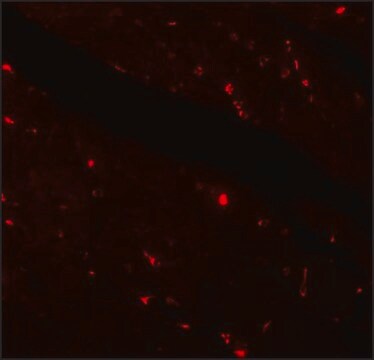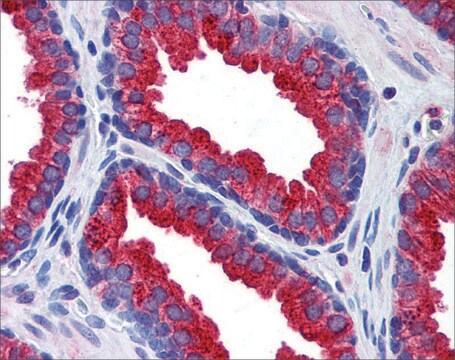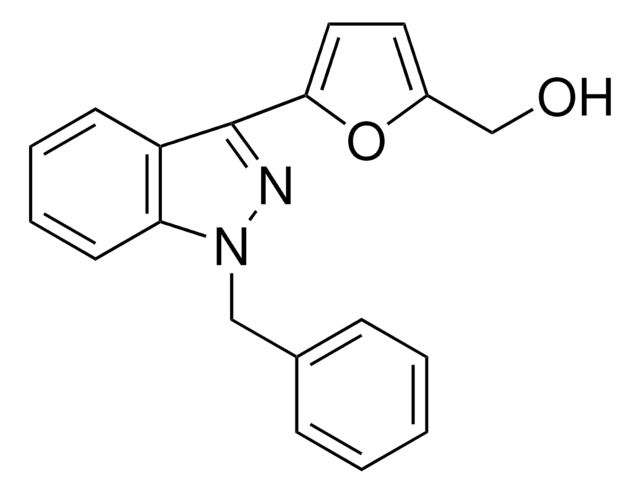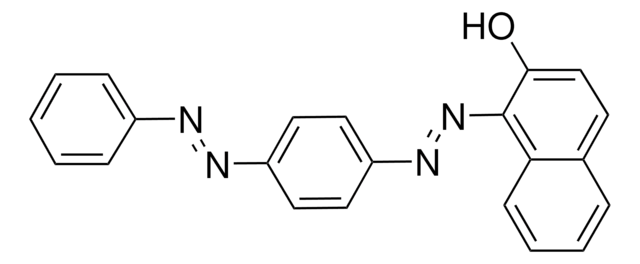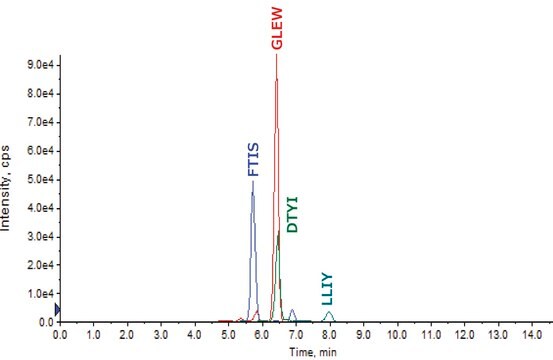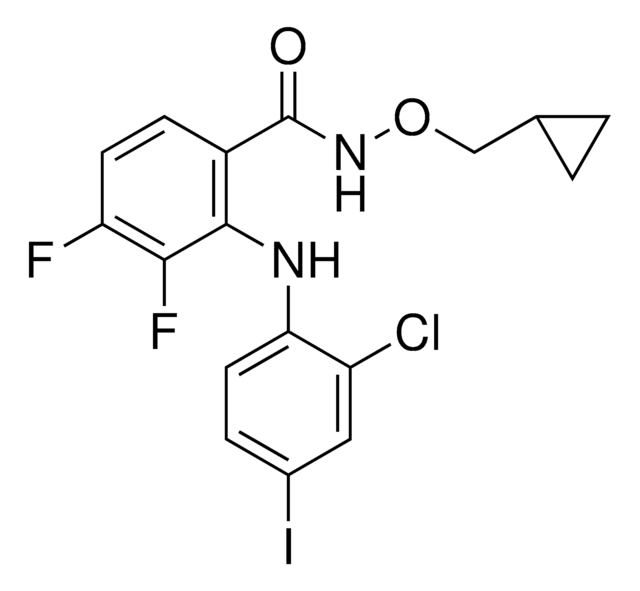Description générale
Klotho (KL) is a glycosylated protein that plays an important role in the regulation of phosphate and calcium homeostasis. Human Klotho exists in both membrane bound and secreted forms, and is predominantly expressed in the kidney convoluted tubules, and to a lesser extent, in the brain, reproductive organs, endocrine glands, urinary bladder, skeletal muscle, placenta, and colon. The full length transmembrane form has a large extracellular domain composed of two homologous subunits termed KL1 and KL2, which contain 516 and 439 amino acid residues, respectively, The predominant circulating form, which is derived from alternative RNA splicing, contains the KL1 subunit and constitutes the N-terminal sequence of transmembrane Klotho. A third Klotho protein of about 128kDa has been identified in the blood and cerebrospinal fluid. This circulating protein arises from the action of an as yet unidentified protease which cleaves transmembrane Klotho just above and/or within the plasma membrane. Recombinant human Klotho is a 65-70kDa glycoprotein containing 516 amino acid residues.
Application
Klotho human has been used to study the role of klotho in liver cancer.
Actions biochimiques/physiologiques
Klotho has been shown to play a key role in the signaling cascade of fibroblast growth factor-23 (FGF-23), a bone derived hormone that acts in the kidney to inhibit phosphate reabsorption and vitamin D biosynthesis. Klotho promotes FGF-23 signaling through binding to FGFRI (IIIc) which converts this canonical FGF receptor into a specific receptor for FGF-23. In the absence of klotho the function of FGF-23 is literally abolished. Klotho might play a protective role in type 1 diabetes mellitus against atherosclerosis and endothelial dysfunction. Absence of klotho in mice causes age-associated traits, such as short lifespan, atherosclerosis, pulmonary emphysema and osteoporosis. It is also involved in cervical, lung and breast cancer. In follicular thyroid cancer, it suppresses growth and enhances cell death by controlling the expression of stanniocalcin-1.
Séquence
EPGDGAQTWA RFSRPPAPEA AGLFQGTFPD GFLWAVGSAA YQTEGGWQQH GKGASIWDTF THHPLAPPGD SRNASLPLGA PSPLQPATGD VASDSYNNVF RDTEALRELG VTHYRFSISW ARVLPNGSAG VPNREGLRYY RRLLERLREL GVQPVVTLYH WDLPQRLQDA YGGWANRALA DHFRDYAELC FRHFGGQVKY WITIDNPYVV AWHGYATGRL APGIRGSPRL GYLVAHNLLL AHAKVWHLYN TSFRPTQGGQ VSIALSSHWI NPRRMTDHSI KECQKSLDFV LGWFAKPVFI DGDYPESMKN NLSSILPDFT ESEKKFIKGT ADFFALCFGP TLSFQLLDPH MKFRQLESPN LRQLLSWIDL EFNHPQIFIV ENGWFVSGTT KRDDAKYMYY LKKFIMETLK AIKLDGVDVI GYTAWSLMDG FEWHRGYSIR RGLFYVDFLS QDKMLLPKSS ALFYQKLIEK NGFPPLPENQ PLEGTFPCDF AWGVVDNYIQ VSQLTKPISS LTKPYH
Forme physique
Lyophilized from 15 mM Sodium Phosphate pH 7.3.
Reconstitution
Centrifuge the vial prior to opening. Reconstitute in water to a concentration of 0.1- 1.0 mg/ml. Do not vortex. This solution can be stored at 2-8°C for up to 1 week. For extended storage, it is recommended to further dilute in a buffer containing a carrier protein (example 0.1% BSA) and store in working aliquots at -20°C to -80°C.
